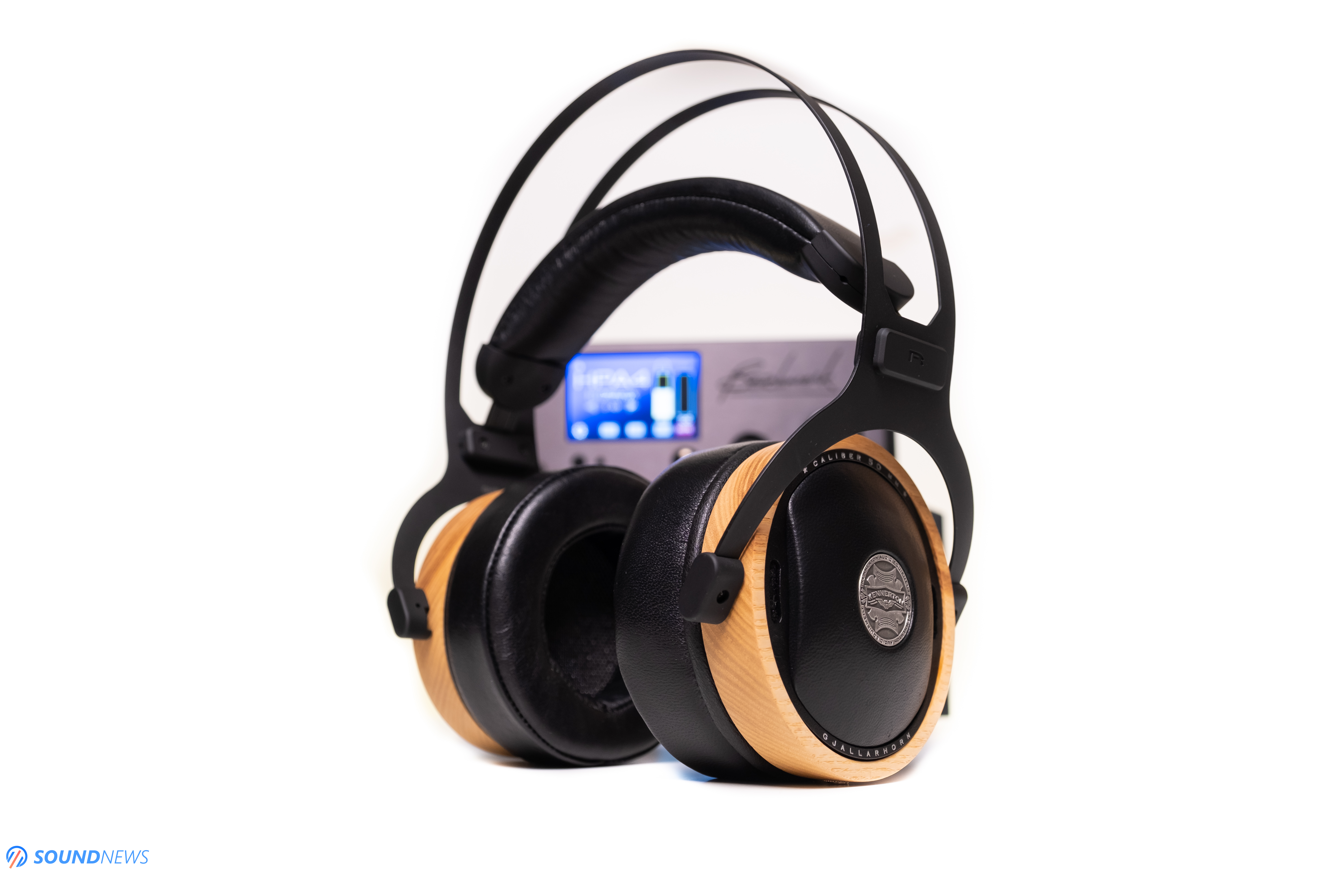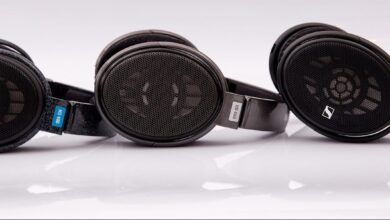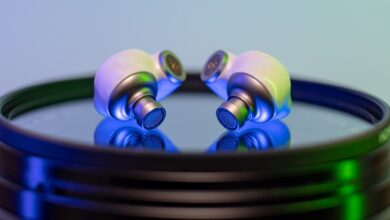Kennerton Gjallarhorn GH50 Review

My Video Review:
When I’ve tried some handcrafted headphones from Saint-Petersburg for the first time, I was surprised by the attention to details, by the build quality itself, by the number of accessories found in the package, by its affordable price point, but the biggest surprise was experiencing that unforgettable sound signature. I’ve tried multiple closed-back headphones from major headphone manufacturers in the past and although I liked few of them, neither one sounded extremely enjoyable and punchy as Magni did for me. From an unknown headphone manufacturer to me, Kennerton plunged high and even surpassed some of the brands I considered world-class.
Magni sounded highly entertaining, offered explosive dynamics and a faster pace too. They also measured greatly considering their closed-back nature. It was clear as the blue sky that those targeted music lovers first, as with them I wanted only to listen to music with eyes closed and let the imagination go wild, as opposed to writing a 10-page review about them, which of course happened much later on.
Besides Magni, Kennerton Audio Equipment did also send their newest Gjallarhorn GH50 (which I simply call horns from now on) headphones with just a spec sheet, a wink and a smiley face attached to their email. A world of unknown was sitting in that package, as Gjallarhorn as its name suggests are the world-first horn-loaded headphones. Their basic working principle is exactly like that of a gramophone, with a small compression driver that produces sound waves which will be passively amplified by the horn. Of course, being a closed-back headphone and being limited by the size of wooden cups, a long and deep horn was out of the question. You can’t find the usual “throat” and “mouth” as you will do with horn-loaded speakers, with Gjallarhorn you will find only a miniature version of a horn design. With this unique working principle, Kennerton wanted to solve the biggest issue of all closed-back headphones – their limited soundstage and depth capabilities. Interesting and very promising ideas, but let’s move on and find for ourselves if it will achieve its goals or not.
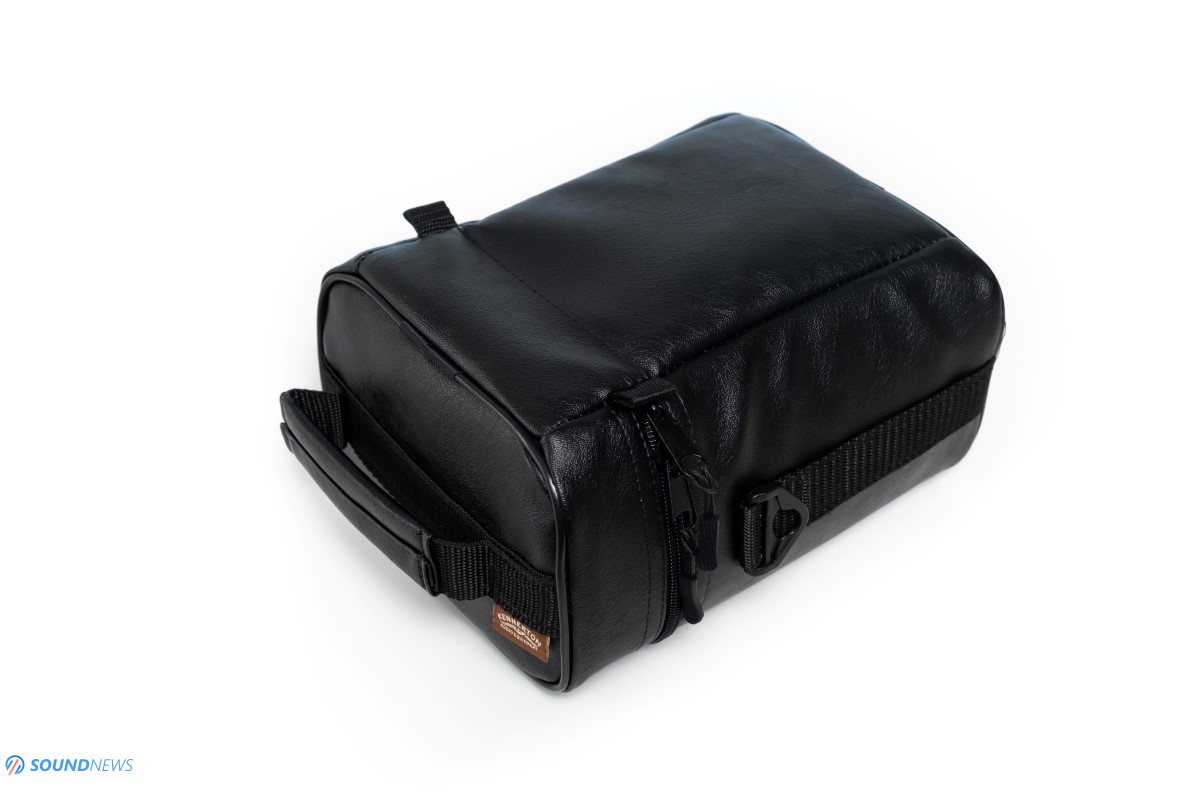
Unboxing Experience
Their package size is exactly like that of the Magni and after opening it up, it was clear that I am dealing with the same number of accessories and that is a very good thing in my book. The big eco-leather shoulder bag was sitting inside, I really like its build quality and its thick padding that will completely protect the headphones during shipping and in short or long trips. Inside the bag you will find the headphones themselves with huge beautiful wooden cups which are slightly deeper compared to Magni, most probably to accommodate the horn. There is also a shoulder strap in one of its pockets, a thick high-quality detachable headphone cable and a short headphone adapter of the same quality. Under the bag you can spot an envelope that contains a user manual and a limited warranty statement where the serial number, manufacturing date and the craftsman name and signature can be found.
I will mention that Magni and Gjallarhorn are having one of the nicest stock cables I’ve seen on any headphone at any price level. It is really thick, it’s durable, both headphone jacks at both ends are metal made and gold platted, it uses a textile outer jacket, it is free of any microphonics – it simply screams high-quality and I have no desire to exchange it.
Upon closely inspecting the horns, I’ve felt all the care and passion that went into making a long-lasting headphone from the highest-grade materials, they will probably last a lifetime.
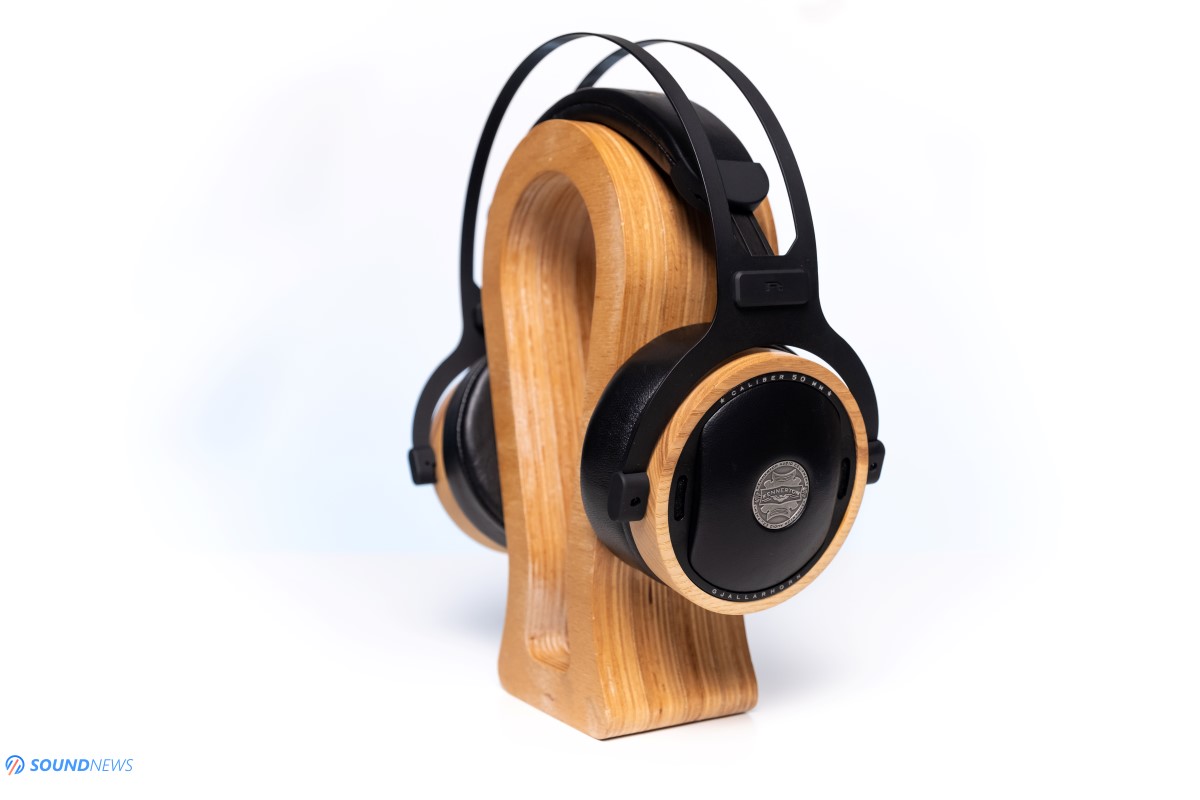
Build Quality & Looks
Kennerton is one of the very few headphone manufacturers that is using solid woods of different trees around the world to make headphone cups for all their models, except for their entry level Jord that is using metal cups. As you can clearly see, Kennerton is very much against using plastic in their headphones, due to is atrocious acoustic properties. There is a trinity of headphone brands what will make you choose the exact wood cups you want to see in your headphones, that will make them considerably more unique and personal. Two of those brands are located in USA and the third one is far to the East – that’s Kennerton of course. For now, they are having only two versions and few others will be coming shortly. The unit I am testing has Maple wood cups, they have another one called “Dusk” which are using most probably Dark Oak or Mahogany wood cups.
Their look is of course a very subjective thing, but after touching the solid wood cups covered with leather and with a Kennerton logo coin in the middle, after playing with those detachable full leather ear-pads and after seeing the full-metal frame and its simple yet effective adjustment mechanism, you can’t be unimpressed by their looks.
Its structure is entirely made out of metal, it’s sanded with matte black paint – my favorite color. The headband stands out as it automatically adjusts to your head size and is putting little to no pressure around the ear or on top of the head. I’m using heavyweight headphones as Erzetich Phobos and Audeze LCD-4 sometimes even three hours a day and compared to those, Gjallarhorn and Magni are simply featherweight when I put them on. Kennerton put a lot of padding on the headband and in the ear pads, so I can wear them for as long as I want without feeling any pain whatsoever on top of my head or around the ears.
The ear-pads are user removable and that is a key aspect for me as I use headphones on a daily basis, they are really soft to the touch, they are filled with memory-foam and are plushy enough to be used in long listening sessions. They are made out of real-leather, so you can be sure that they will not peel off in time. The head-band is wrapped with Eco-leather with a Kennerton logo printed on it and is really soft to the touch.
Gjallarhorn weighs only 406 grams (or about 0.9 pounds), that is about 34 grams lighter compared to Magni and it is much lighter weight compared to flagship planar-magnetic headphones. In terms of comfort, Gjallarhorn together with Magni are currently some of the most comfortable headphones I have ever used and from my headphone collection, those are second headphones in terms of comfort, number one is still the Hifiman Arya.
All in all, in terms of build quality and comfort, I am amazed by the extra measures taken by the Kennerton team in achieving a unique looking headphone, that uses highest grade materials and a top comfort level.
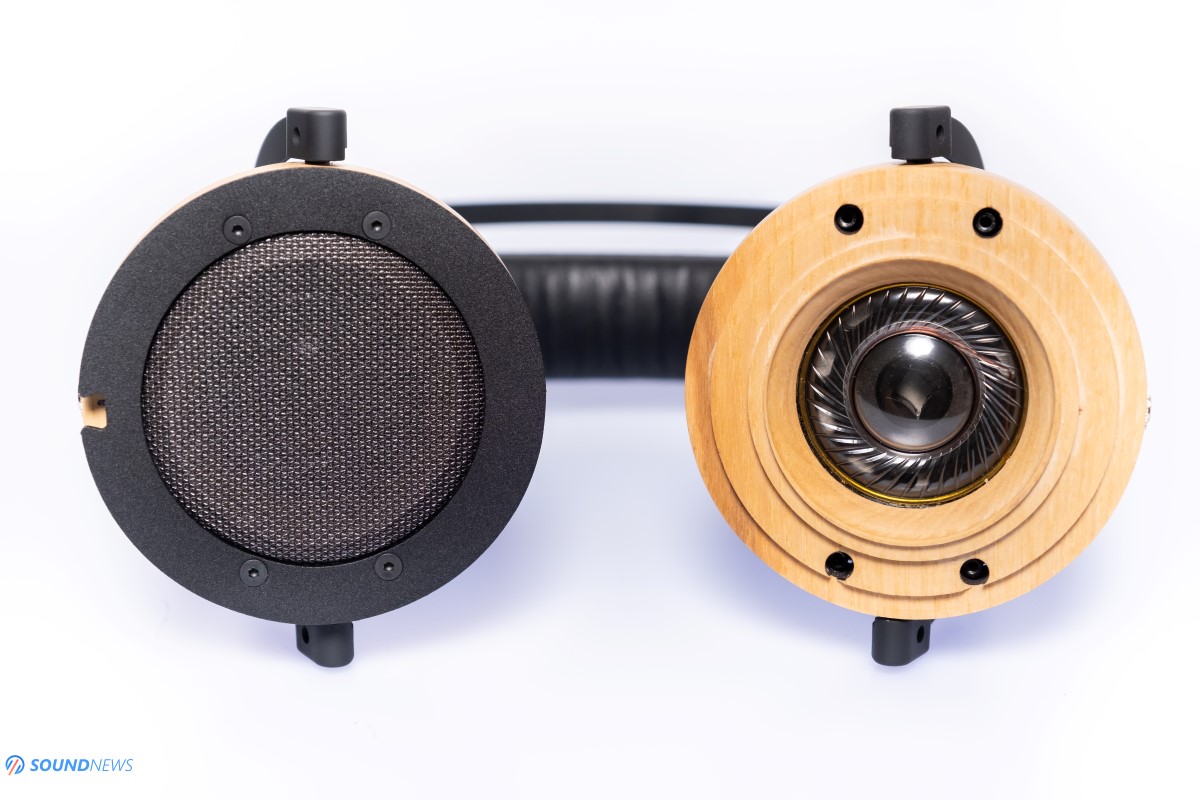
Technology Inside
In their top-of-the-line headphones, Kennerton uses only planar-magnetic drivers for the most realistic, detailed and complete sound you could wish for. However, for their mid-level offerings as Magni, Vali and Gjallarhorn, they went with dynamic drivers instead. With all that said, do note that the rest of the build quality is absolutely the same with their top headphones which makes those mid-level models extremely appealing.
Gjallarhorn is a closed-back headphone and with it Kennerton wanted to try something that no-one did until now. Developing an actual horn in a closed-back design is not for the faint of heart! Because you need to make a lot of free space in the wooden cup to accommodate an actual horn, you need to mechanically decouple the driver from the wooden cups and of course you need to seriously dampen the back side of the driver so you would have less distortion and a nice tonal balance. It’s a trifecta that needs to be balanced to achieve nice sonics and measurements and a nice-looking pair of headphones too. At the base of the horn sits an extremely thin 50 mm graphene driver that will need small voltages to be moved and play music for you. They also used graphene in their Magni and as my comprehensive review proved, that is a very capable driver when it comes to speed and slam but also in terms of detail and transparency. With it, Kennerton killed two rabbits with a single shot: it’s extremely thin, much thinner than cellulose drivers its competition are using – in real life tests it proved to be extremely fast sounding with shorter decays and not a lot of power was needed to make it sing. Making that driver out of graphene was another genius idea – its 300 times stronger than steel, making it hard to damage but really easy to move when applying a magnetic force. Kennerton is one of the very first adopters of such drivers and I’m happy to see it used more often, as graphene has a great potential when it comes to acoustics.

Creating a pure graphene membrane with current technology is time-consuming and very costly with very low yield rates and as a direct result Kennerton went with a hybrid membrane made of mylar that is powder coated with graphene using a thermal method. In return, the classical dynamic mylar based driver is significantly improved, having a much better strength, meaning a higher SPL can be applied to it without the fear of damaging it. It also increased its rigidity and lowered the unwanted vibrations to all time low. Kennerton added an ultra-light aluminum voice coil that was covered with a thin layer of copper to increase its electric conductivity.
Besides a high-performance driver, a powerful magnetic force will be needed to push it back and forth and create a nice impact, increasing the overall speed of the driver. Kennerton used a much bigger magnet structure compared to its competitors to increase the magnetic force that is being applied to the driver. All of this combined should offer a wider dynamic range, a better kick and impact into eardrums with minimal loss in terms of details and transparency.
I’m ready for some well-deserved music so let’s hit some eardrums.
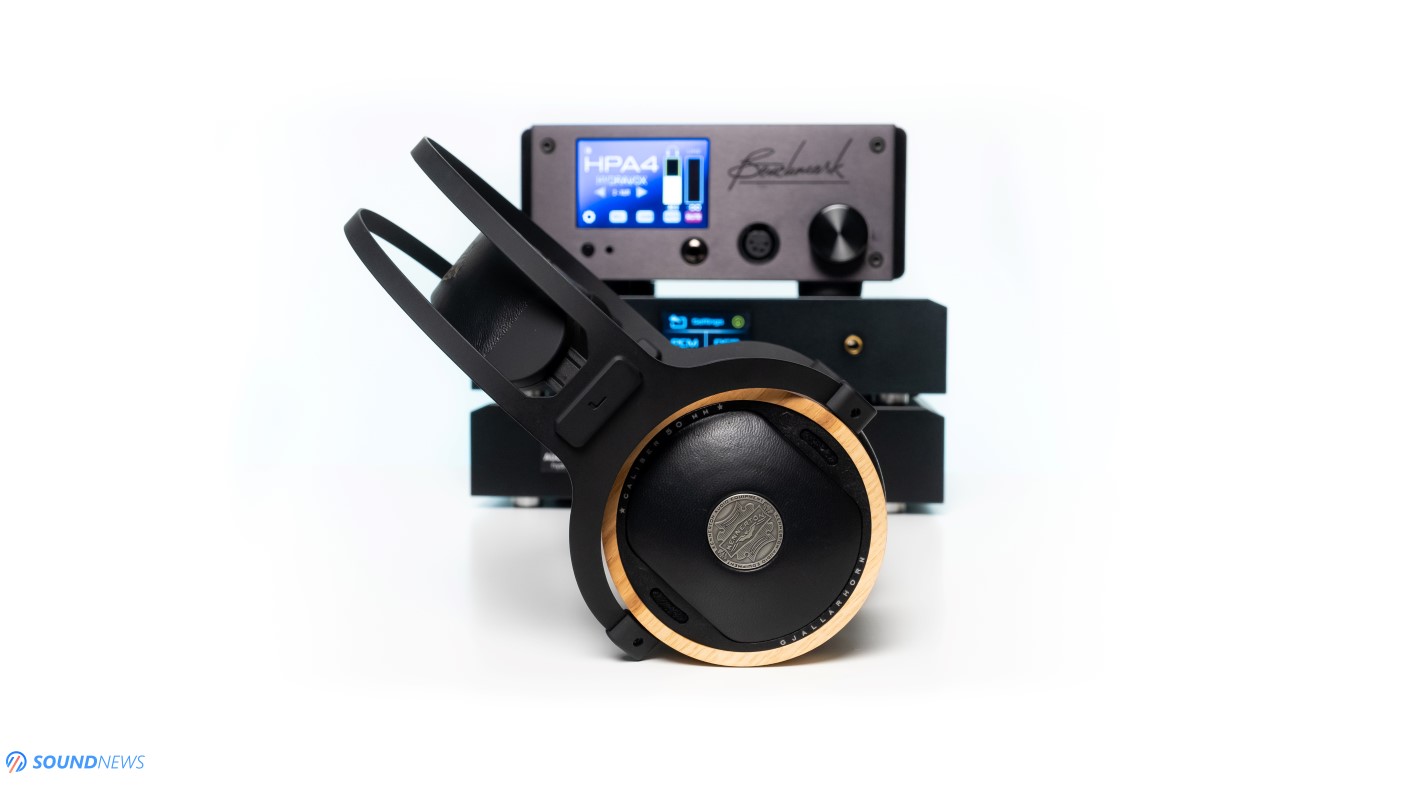
Sound Performance
I. Preliminary Impressions
Generally speaking, when I’m thinking about a closed-back headphone, I am thinking about best in-class bass performance with a thunder like slam and impact, I am thinking about a cozy and up-front stage, about a good passive noise isolation and not a lot about an expansive, open wide sound or about an amazing depth performance. Sure enough, I am experiencing that bass heft, that life-like midrange performance that Magni also offered in huge quantities, but there is a lot more! Sounds are coming from afar, from multiple starting points and they hit my eardrums from different angles. I was already expecting a large left to right soundstage and I’ve heard it right away even from the first seconds. I’m actually not shy saying that horns are sounding more open and wide compared to a lot of semi-open and even open-back designs. However, with them the name of the game is not the stage size but the depth and layering – that was simply unheard of up to this point. If you ever read a headphone review of mine, you’ll observe that I’m mostly impressed by the depth of field a headphone can possess and not a lot by the left to right stage size on a single axe.
There was a strong sense of Déjà Vu with horns, the tonal balance was simply spot-on and very reminiscent of that of the Magni. There is zero of that non-sensical V-shaped performance that most of the closed back headphones from Fostex, Beyerdynamic or Sennheiser are having. Kennerton infused some soul in these, you will not find in here that hollow, empty and ethereal sound of closed-back headphones. With horns, there is a lot of meat to the bone, there is naturalness and real textures that only a wooden chamber can provide. Marvelous bass and treble performance were already expected and they delivered those with flying colors, but the midrange density and that heavy air around every note was making them truly special, standing out from the rest of the closed-back flock. It is already clear to me that Kennerton is not following the rules, they didn’t want a me-too product just to please the closed-back crowd, they wanted something that nobody did until now and by the gods…they succeeded!
If you’ll check some of the measurements of the best and most expensive closed-back headphones, you’ll observe a trend that you can’t really put in the same chassis great sound and great measurements, its mostly only the former. Sennheiser actually hired third party engineers so they could properly develop and reveal their HD820. To some degree, those are pretty sounding headphones, but with horrid measurements and much higher distortion numbers…even Sennheiser can’t market them as their flagship headphones. I will be making some interesting discoveries later on with the horns when I’ll measure them shortly and compare those to the mighty Sennheiser HD820. Make sure to check them out in my latest chapters.

II. Power Requirements
This is an extremely interesting chapter. If you would check my recent Magni review, you would observe that those are extremely easy to drive. The interesting part is that Gjallarhon are using exactly the same driver, with a horn design that passively amplifies the sound compared to a traditional driver layout – by doing that horns are actually by about 1 dB easier to drive compared to Magni! What was 114 dB per 1mW of power, sits now at a huge sensitivity of 116 dB, making them one of the easiest to drive desktop headphones that I stumbled upon. As you can see, the horn-loaded design, the super low impedance of just 33 Ohms and of course that super-thin graphene coated driver, all of them played major roles in achieving such high sensitivity numbers. In real like scenarios, I always needed to double check the volume of my amplifiers before pressing play as Gjallarhorn are becoming loud and quite fast even with portable sources and not only with desktop power.
Compared to some of my headphones, horns are by about 15 dB more efficient to the Audeze LCD-4, 14 dB more efficient to the Hifiman Arya and by about 1 dB more efficient to its Magni sibling. Compared to portable over ear headphones, like the Momentum line by Sennheiser or the 99 line by Meze, Gjallarhorns are more or less on the same level. I’m serious, MiniDSP E.A.R.S. and Benchmark HPA4 recorded a difference of less than 1 dB compared to those portable headphones. This is a very big deal, since not a lot of people are comfortable purchasing separately a desktop headphone amplifier. Others are never listening to their headphones at home in a desktop setup and are always on the move. What I want to say is that with the Gjallarhorn, most of the headphone jacks you can find around, will most probably drive them to pretty loud levels. Small portable digital-audio-players (DAPs) from the likes of FiiO, Shanling, Astell&Kern, Sony and so on, would be more than enough for a high sound pressure level. Small audiophile dongles like those from Audioquest and many others are more than capable of unleashing loud tunes with the horns too. I am actually going to tell you, that you don’t really need a dedicated portable or desktop headphone amplifier to enjoy the hell out of them, but they will sound slightly better with one.
That transportable shoulder-bag completely makes sense now, as you can easily carry them to your office and back home, you can use them in long or short trips, with just a smartphone and a music subscription and be extremely happy with the outcome. From my headphone stable I have 3 desktop headphones which I really like, but I can use them only in from of the desktop Hi-Fi setup, otherwise I don’t have enough power to awake nicer dynamics, punchy notes and stuff like that. With horns and even with Magni for that matter, I don’t need kilo-buck amplifiers that are heavy and expensive, I need only a headphone jack for some quiet musical moments. Yes, this is a very big deal as generally speaking portable over-ear headphones are sounding decent but far from Hi-Fi, but with the horns that problem is completely solved. You have all your Hi-Fi needs and technicalities you could wish for – straight out of your smartphone.
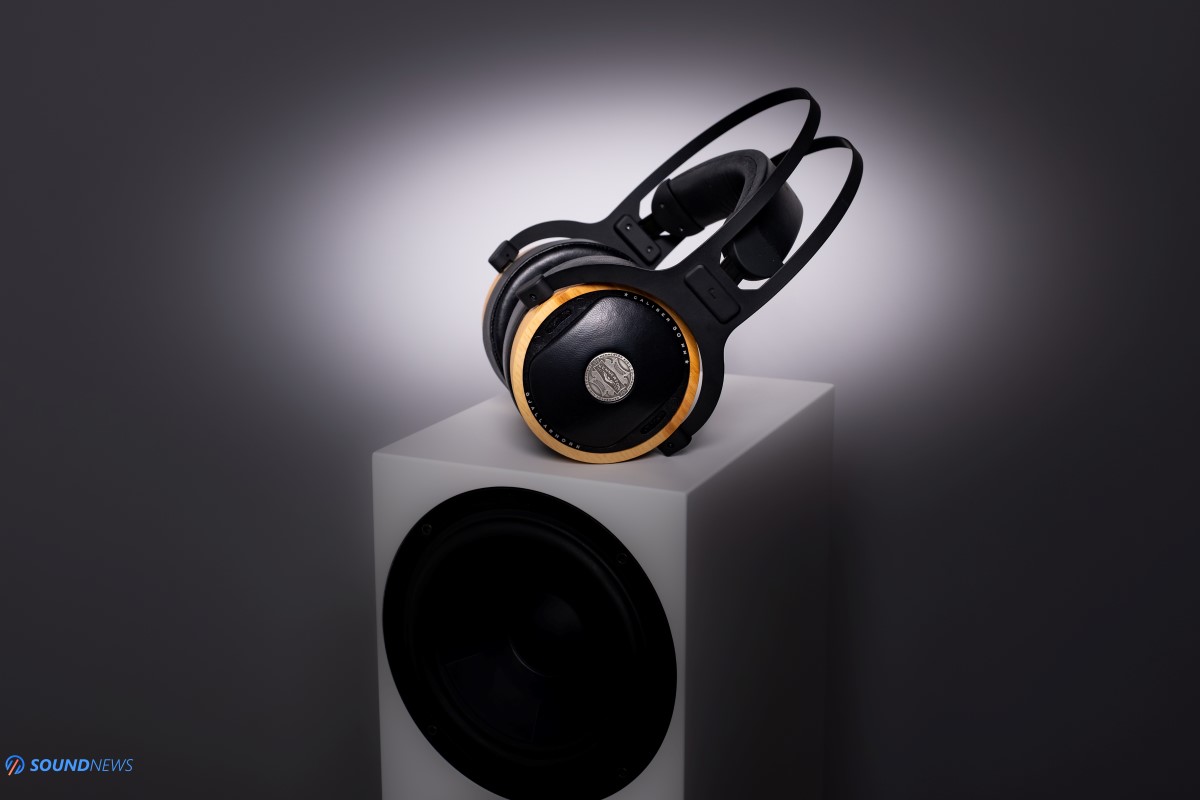
III. Soundstage & Depth
If you are thinking of buying the horns instead of the cheaper Magni, you are doing that only because of this exact chapter and not for anything else. I’m usually describing this chapter at later stages in my reviews, but how could I move forward without mentioning the most important thing, their uniqueness and what really makes them shine compared to others.
Ok guys, grab your chair handles and read it out loud with me: Kennerton Gjallarhorn are sounding wider and deeper compared to the open-back Hifiman Aya, Sennheiser HD6XX line of headphones, wider and deeper compared to semi-open headphones like OLLO S4X and bigger compared to all closed-back headphones I’ve tried up to this point, yep, Magni included.
Go wild, tell others, Gjallarhorn is like that and at first it is quite weird experiencing such a big distance between your left and right ear. There is a small sense of confusion within the first minutes after pressing play, because you simply don’t expect it. Need spatial cues? Got them. Need a deeper performance to deconstruct those live-records? Horns got them too. Are you are crazy about those sixties blues with extremely large left to right soundstage because mastering engineers were making music for speaker listening only? Gjallarhorn will increase that feeling even more. I will simply say that from all closed-back phones I’ve tried, only Kennerton creation and Sennheiser HD820 sounded compelling, big, open wide and deep.
I’m usually not listening to cozy jazz records or older rock with closed-back headphones, because there is a feeling like I need more air to breathe, but with horns this is a non-issue anymore. Literally, every jazz, blues and old rock album sounded like it did with my open-back headphones.
Before you go crazy, I need to mention something that is really different to open-back headphones: decay of the notes and the imaginary wall that is being hit with closed-backs. Open headphones have smooth natural decays with notes simply disappearing from your music, you hear them and then you are not. With closed-backs there is a sense that they are hitting a wall and are abruptly decaying, there isn’t that smooth transition from inception, sustain and decay of a note. That will not happen in here and sadly nothing can be done about it. Sennheiser tried with a concave glass sheet and it didn’t work, Sony tried with holes spitting air outside of the chamber, it didn’t work also. It is simply a limitation that we must live with when it comes to closed-backs and Gjallarhorns are no different. There is always a sense like you are sitting in a big room and not outside with the sky above you, you simply feel the walls that are absorbing those sounds. Once you understand why that happens, it will become a lesser concern. I can live with such a drawback, since everything else is at the level of open-back headphones.
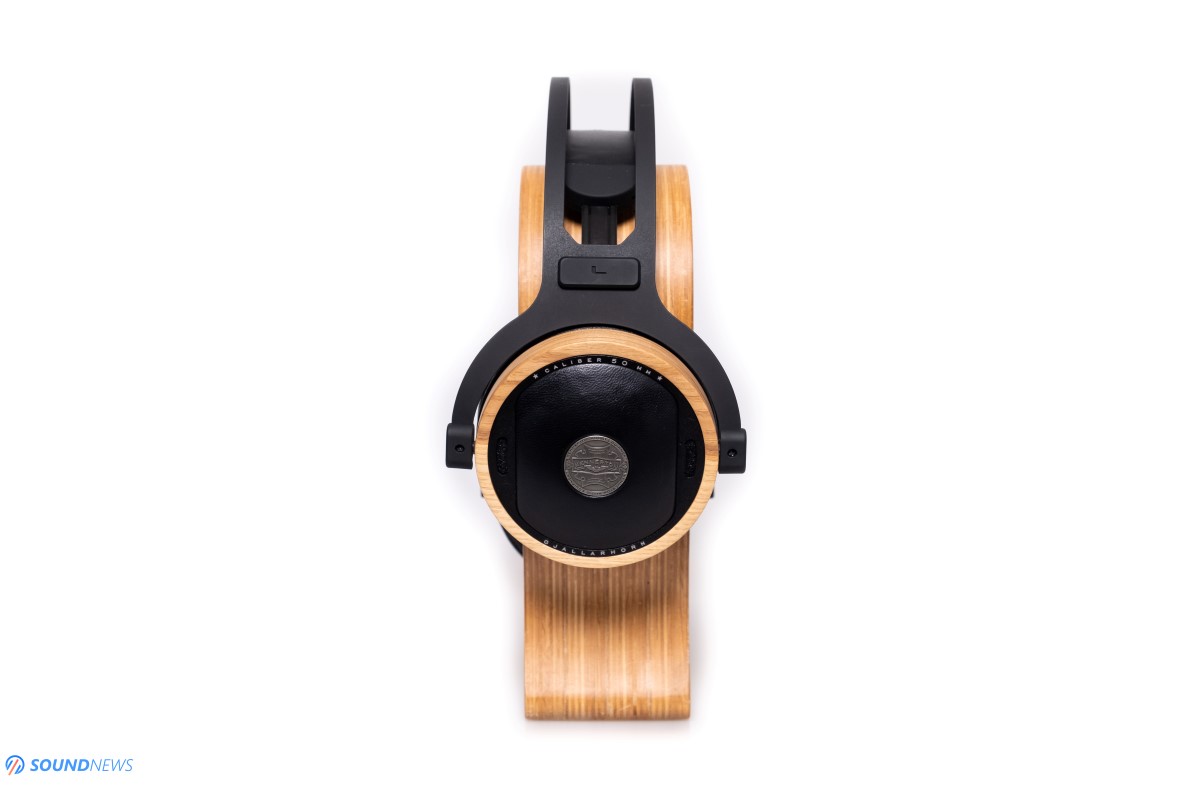
IV. Transient Response
If you drink three grasses of strong spirits instead of just one, your lady will start giving you weird looks – cause and effect and that works with audio too. This is another interesting chapter that makes them different sounding compared to Magni. There is again that good speed and impact that I mentioned in my Magni review. Horns are also extremely engaging and toe-tapping and I see them positioned as music listening headphones and not as music-making headphones…However there is a very distinct phenomenon happening with these. Since the drivers are staying slightly farther away from the ear-canal with a horn between you and those drivers, the sound needs to pass a longer distance before hitting your eardrums and once that happens, the final impact and slam of the original acoustic waves will be slightly diminished. Horns are also engaging, but not as punchy sounding and I can’t call them transient monsters as Magni were for me. Its drivers are indeed the same, but the ear distance is longer and that equals with a lesser impact into your eardrums. Again, cause and effect.
If you go with modern over-processed music which I’m not into that much, then the slam is a non-issue anymore. My usual electronica tracks are still thumping and hitting me like I’m between the hammer and the anvil. Thor’s son impact could be achieved with the right music and I’ve experienced that multiple times. Hell, even blues have a very distinct thump due to double-bass notes which are moving a lot more air than a bass-guitar would move and I’m feeling that pretty easily with Gjallarhorn.
Besides the final blow that was attenuated a bit, everything else like the speed, how much air a note can bring in the room, remained completely intact. Gjallarhorn is a natural speeder and knows how to land a punch too, but only with the right music.
Slower paced and mellower music was also a delight to listen to, with such music horns will press the brake pedal at the right time and will calm your spirits. Frank Sinatra’s Fly Me To The Moon and then My Way (Tidal / Spotify) had all that smoke around Frank’s voice, the smoothness came in full-force and from toe-tapping, I just started slowly nodding my head. Fly To The Moon (original version) has small reverbs like short echoes that the remastered version doesn’t have and I’m usually spotting them only with high-end headphones. I’m glad to report that I am hearing that reverb loud and clear with the horns and that makes me extremely happy. The Way You Look Tonight (Tidal / Spotify) made me completely relax and disconnect from reality, I left my keyboard, turned off the screen, I grabbed a cigar and leaned on my back…This song always puts to me to rest and I was simply picking up notes with my mind around me, such a nice rendition of this song. The fist and the last parts of this chapter reminded me that Gjallarhorn can be both a wild beast unleashing some impressive dynamics, but it can also be a beauty, singing gently with lots of refinement only for you.
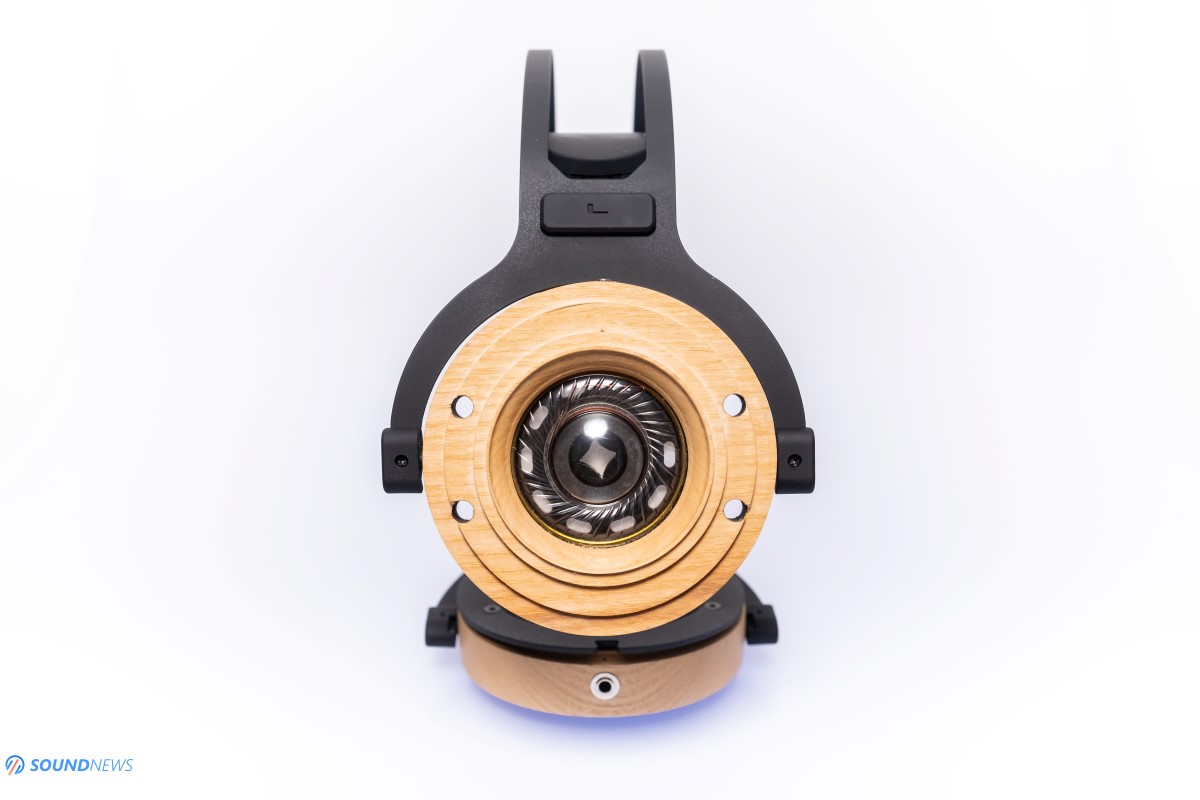
V. Detail Retrieval & Transparency
Gjallarhorn has a high-performance driver inside them as I’ve experienced the same clean nature with their Magni sibling. I wasn’t surprised anymore to hear micro-details and small imperfections in my songs. There isn’t a veil or any muddiness whatsoever and I felt that they offered considerably more details compared to my other closed-back portable headphones as Meze 99 Classics and Sennheiser Momentum 2. Kennerton didn’t add over-sharpness in these, there is an insignificant drop in the treble region, especially the most sensitive part of our hearing is rolled-ff a bit and that makes the treble manageable and pleasing with bright recordings. I’ve spotted multiple bass layers, voices on multiple tonalities with a correct pitch attached to them, only the treble region made one step backwards for a more relaxed presentation. With horns, I don’t feel that there is a higher pressure in a particular area, the midrange is slightly boosted by a very small margin, but I actually like a denser midrange tone.
With albums like Meet You Where You Are by David Roth (Tidal / Spotify), A Very Thin Wire by Steve Strauss (Tidal / Spotify) or Playing For Luck by Ranagri (Tidal / Spotify) I’m sometimes wondering, if I would listen to them live in a perfectly dampened chamber, would they appear as clean and detailed sounding as their studio albums do? With music like this, I was squeezing the best horns could offer in terms of natural textures, pin point location of all the notes and of course detail retrieval. Gjallarhorn is quite a detailed sounding headphone, just don’t expect it outplaying high-end planar-magnetic headphones, there is still a reason Kennerton makes those too.
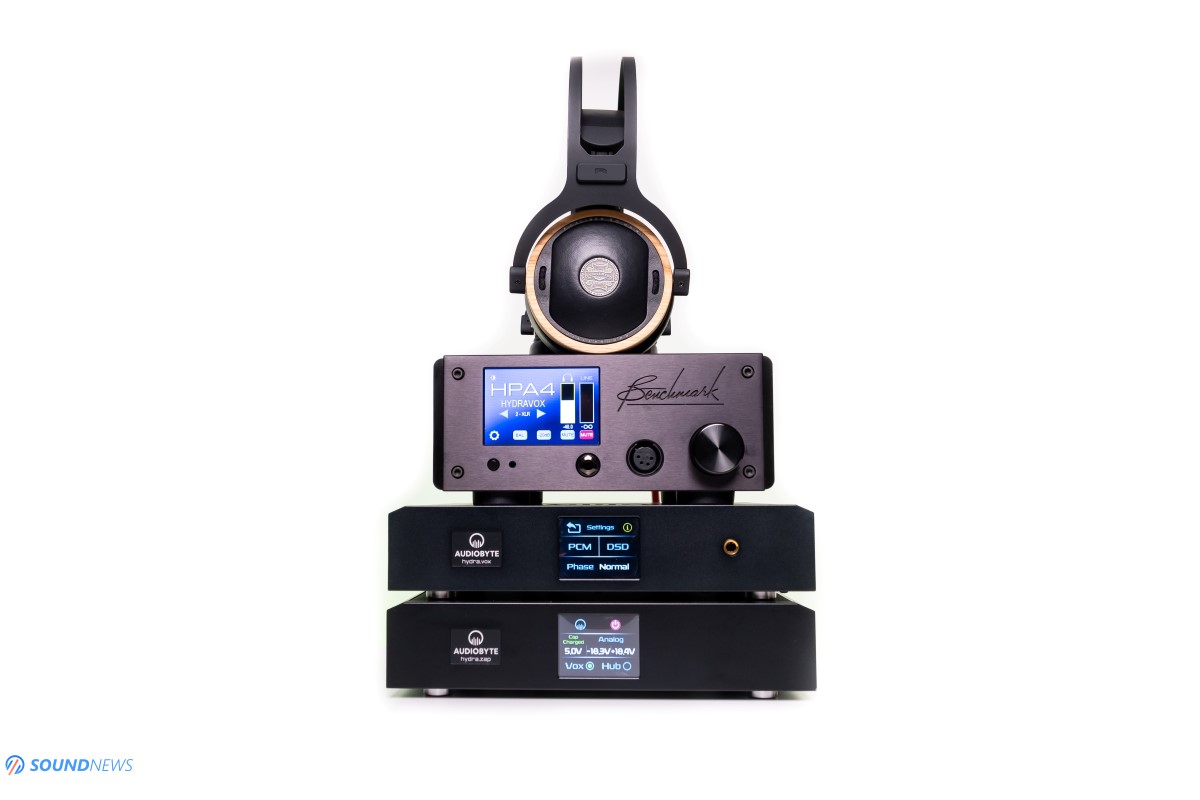
VI. Frequency Response
Bass performance of this headphone can be summarized as close to perfect. Sub-bass starts strongly from the lowest octaves, I’ve heard it loud and clear with electronica tracks and with 20 Hz sweep tones too. It shouldn’t come as a surprise to anyone that a well-engineered closed headphone is super impressive in terms of bass, as Magni did exactly the same. If bass is important to you, then both Kennerton siblings will impress you right away. There is a lot of texture in this region, lots of layers can be felt too, it is speedy and punchy and it sounds in a clean manner. I didn’t feel them having a bass-canon or slow sub-woofer like bass in here, low-end was always clean sounding, it was controlled and decayed at the right moment. Mid-bass felt exactly like that and there is not much to add. I consider its bass performance one of its stronger points.
Midrange in a closed-back headphone it quite difficult to move forward. Fostex tried that, but sadly those wooden cups added texture but not a lot of weight in this region. I’m not exactly sure how Kennerton did it, but it sounds like a proper midrange with lots of density, weight and with lots of charisma in here too. Voices aren’t crumpled, male voices are still having steel cojones and females a higher pitch. If you would experience goose bumps with these, that would happen thanks to its natural presentation of the mid-tones. Mind you, it’s not overdone, but it attracts quite a lot of attention of the listener. I’m enjoying a lot of midrange-oriented music and if that is not done right, the tonal balance would be thrown out of the window. Gjallarhorn has that under control, there is still a small deviation from linearity with just a hint of boosted midrange, but I’m actually liking this approach especially with pre ‘90 music.
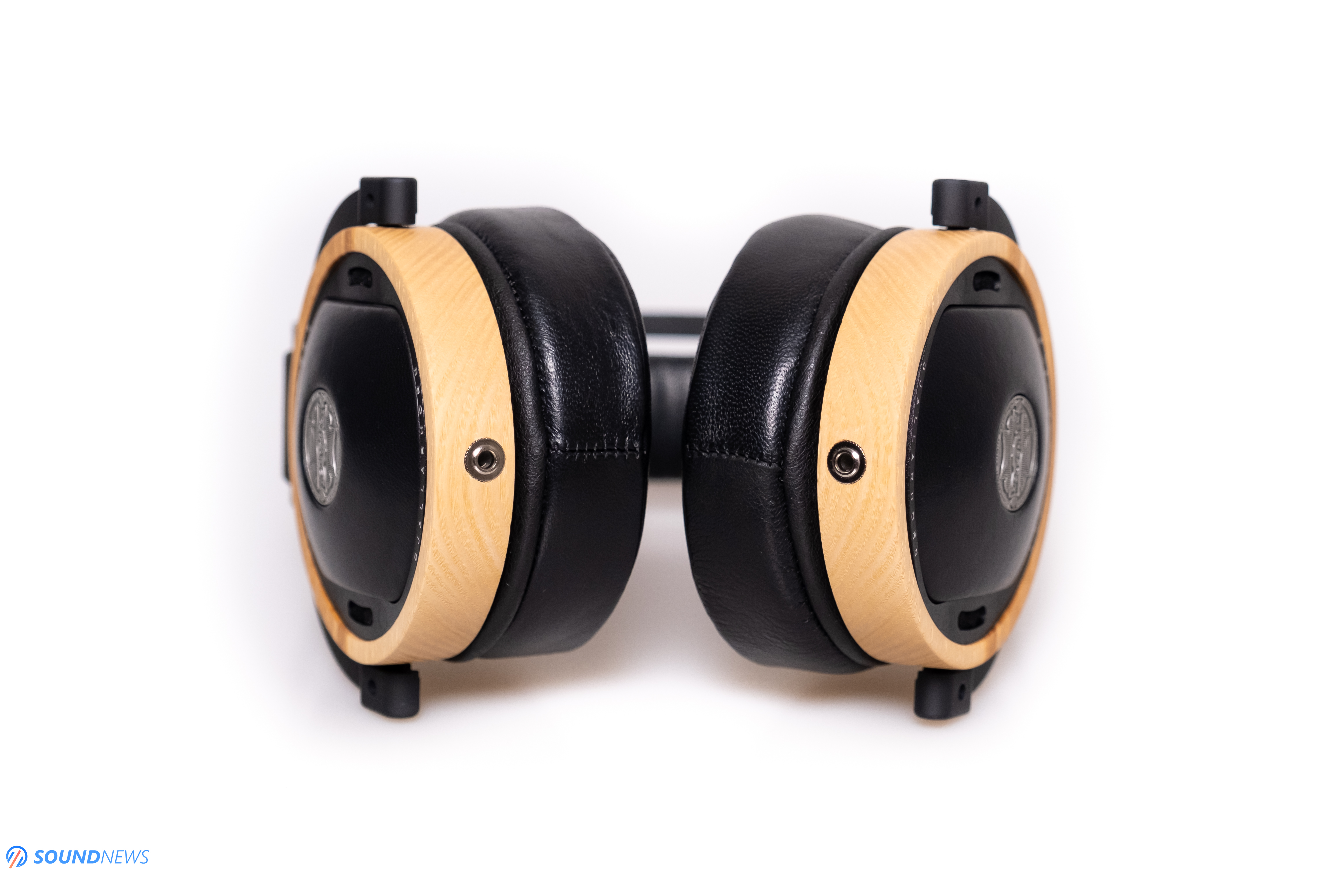
Treble is not far off from linearity either, seriously now, it sounds pretty damn impressive in here too with plenty of spark up top, with plenty of details even past top-octave, with a nice shimmer and texture in here too. Listening to everything from classical to metal music, the treble quality is extremely important. I still want to hear those cymbals crashing aggressively but decaying softly, snare drum hits needs to be executed perfectly and decaying with a faster tempo. Gjallarhorn has all that, just to a lesser degree. In the most sensitive part, there is a small drop in the treble that makes it smoother and more natural sounding. You will not find brightness and harsh notes in here, but a natural rendition of it with plenty of information. It was quite surprising experiencing a bit more treble presence even compared to high-end closed backs like HD820 by Sennheiser, that was unexpected at all. As a whole, treble is extended with just a small drop around 4 to 6 kHz that makes them a joy in long listening sessions.
Overall, the frequency response felt complete, without roll-offs at both ends, without crumpled midrange or thin sounding voices. It wasn’t a perfect line either, but hey…sometimes I don’t wish to analyze my music, I simply want to enjoy it for a longer period of time.
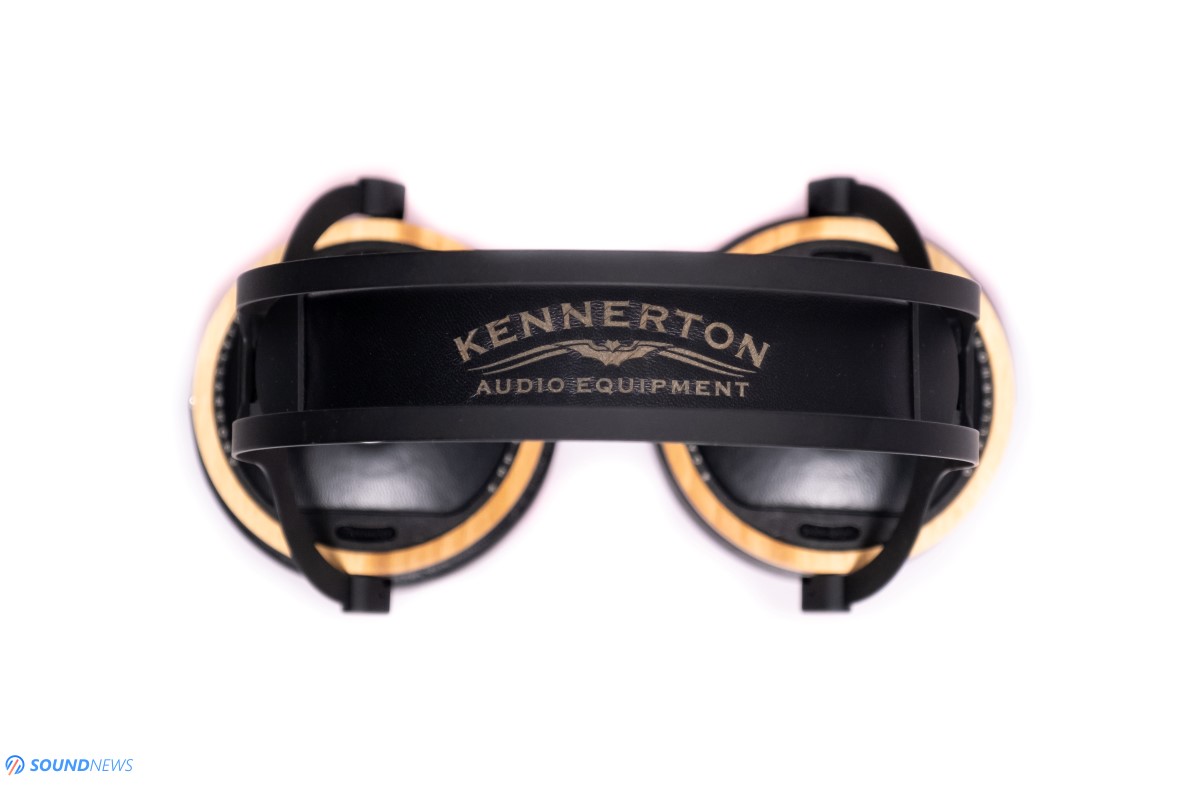
VII. Measurements
When it comes to measurements, I have the highest confidence in the Benchmark HPA4 as it is as linear as headphone amplifiers could go and Audiobyte HydraVox was the main music decoder for the job. The measurement rig was the MiniDSP E.A.R.S. calibrated with HPN (Original Headphone Compensation) files. Do note that MiniDSP EARS is not following any IEC standards, meaning that my readings can’t be used as reference measurements or anything like that, I’m doing them only to get a general idea about their sound signature.
I redid my measurements about 20 times since the leather earpads were staying on top on the metal screws around the silicon ears of the MiniDSP EARS system, breaking the seal and recording a non-representative frequency response. It took me a couple of hours before I found the perfect position with a perfect seal. I didn’t apply any pressure on the ear-pads, every measurement was made in a free-standing position in a quiet environment (~18 dB).
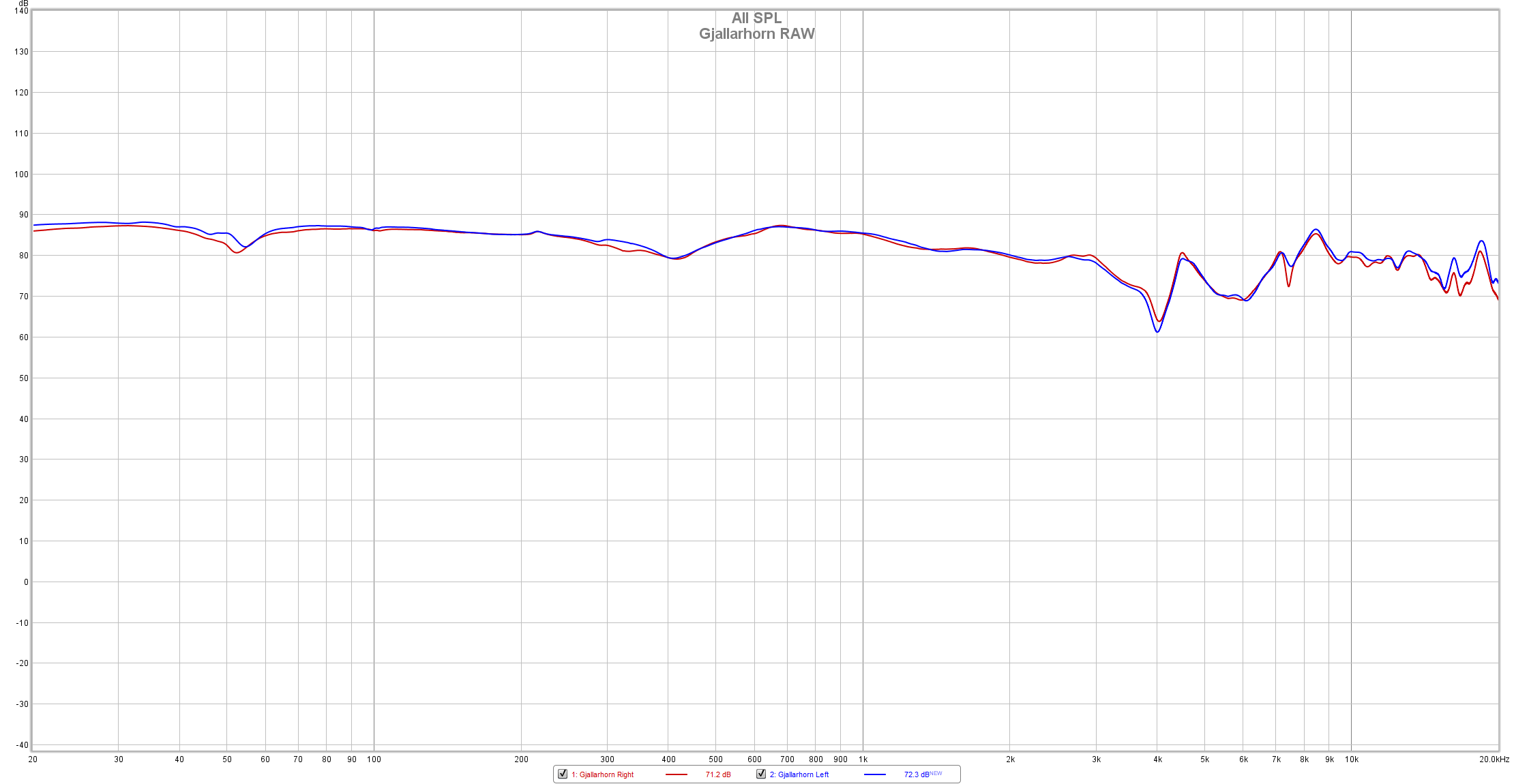
These are their RAW measurements without any kind of smoothing applied. Driver matching is really good, frequency response is impressive since we are talking about closed-back headphones. There is a small deviation from linearity but nothing to be worried about. As you can see, Gjallarhorn was tuned towards a fun and punchy experience with bass and midrange taking a step forward.
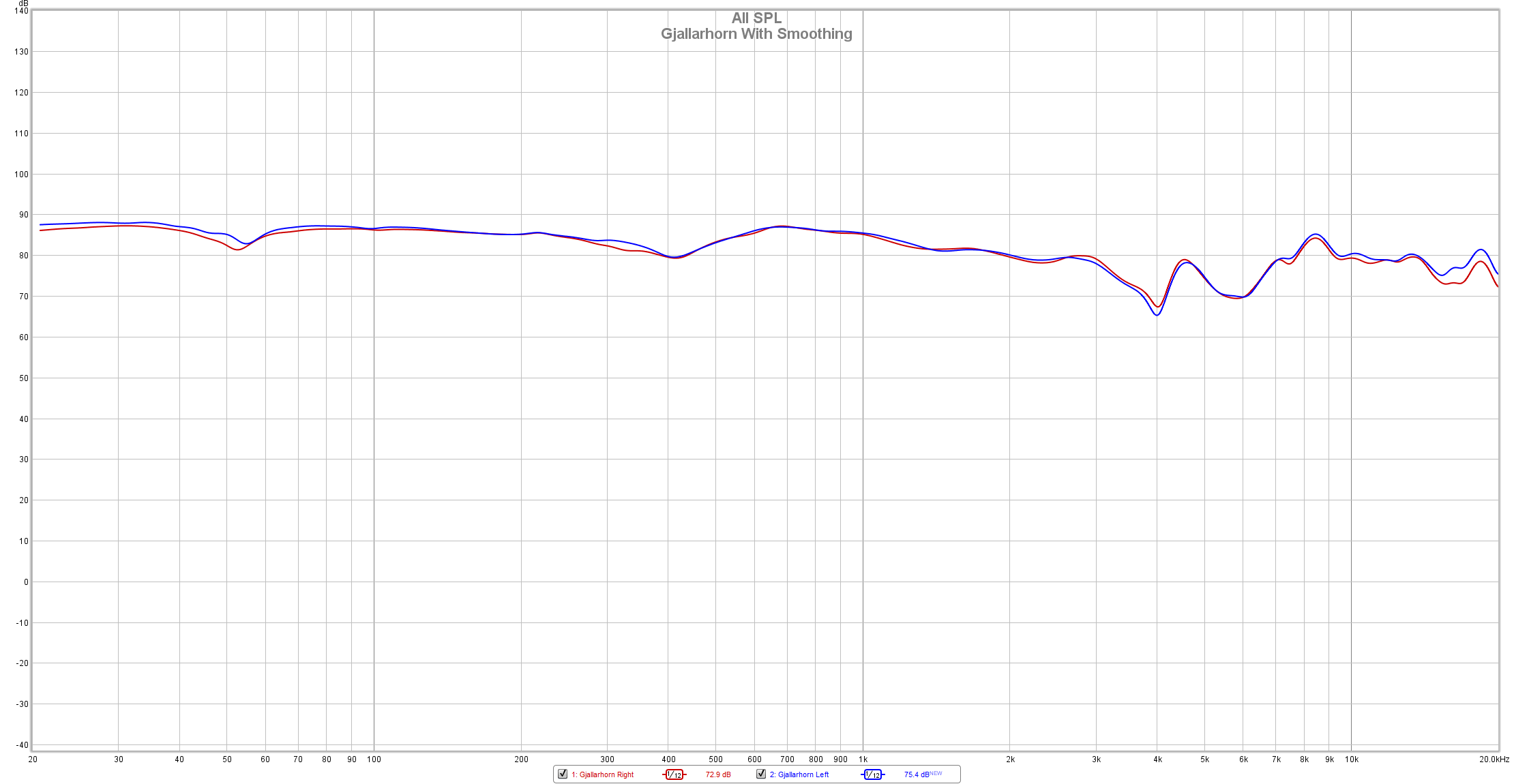
Applying a gentle 1/12 smoothing not a lot of things are changing. Notice the treble gap that I was mentioning before. It’s not as serious as other headphones are having. Even HD820 has a much bigger gap.

Curious how they stand versus the mighty HD820? Here is a comparison FR chart between the two. Blue – HD820, Brown – Gjallarhorn. As you can see, Gjallarhorn are considerably more linear top to bottom, with a much better treble response, all that at a much lower price point.

This is a closed-back headphone, so a rise in the THD to 0.4% is normal behavior. I will just say that horns have a much lesser distortion in the treble region compared to HD820 which tells a lot about their long development time.
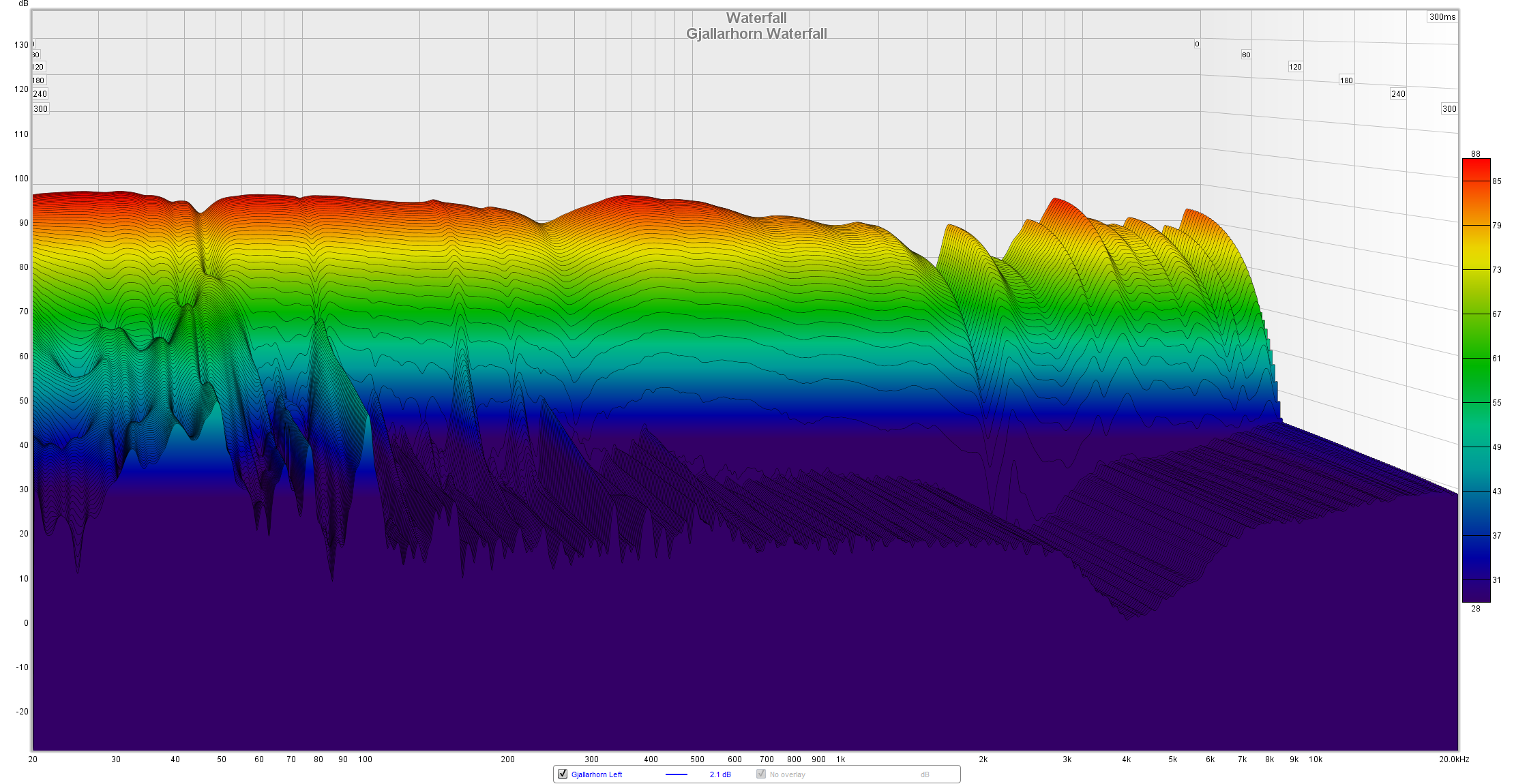
Waterfall and spectral decay are showing a longer driver vibration and decay in the bass region, but again – it’s a closed back headphone so that is pretty normal.
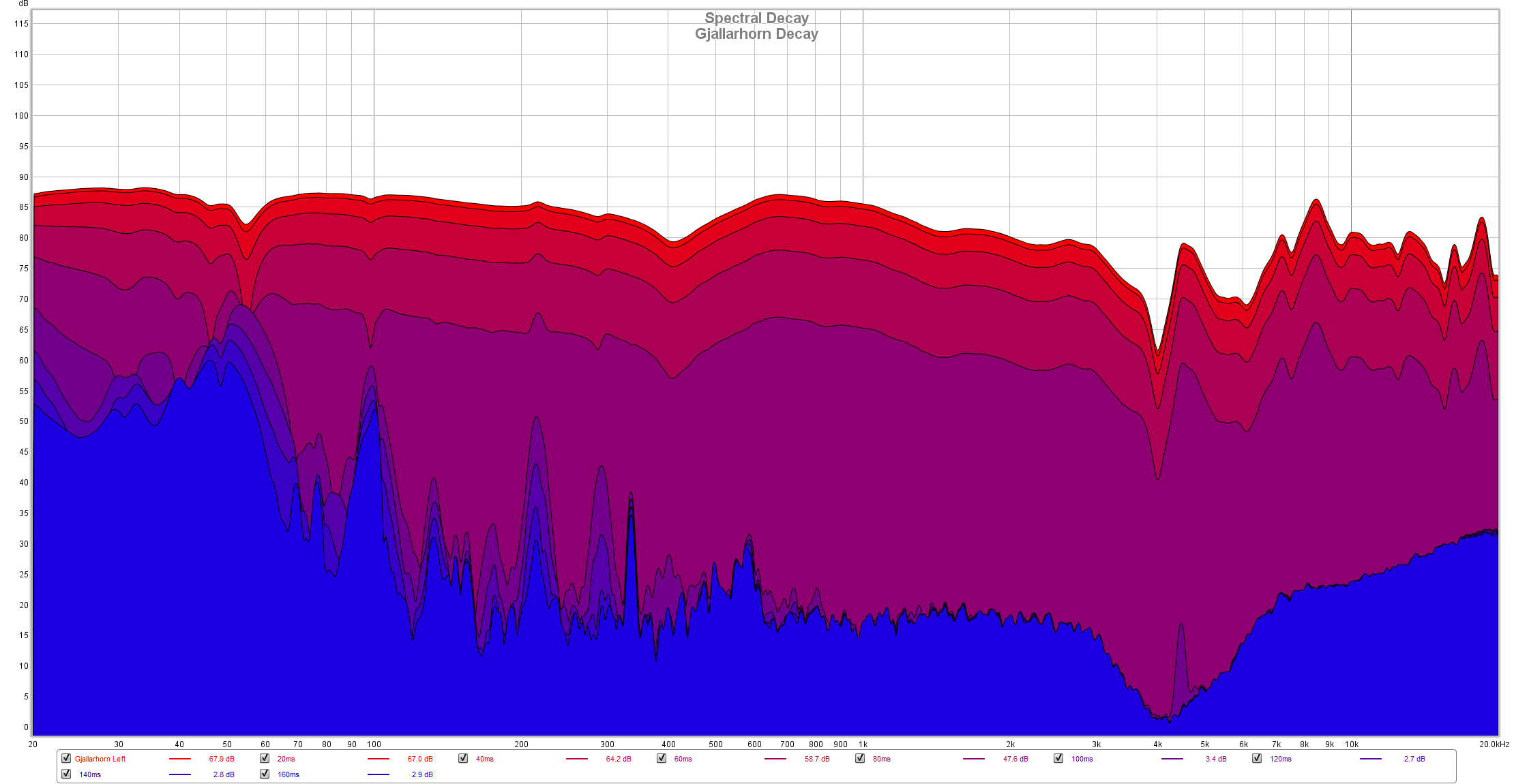
All in all, I’ve recorded a nice driver matching, a really good tonal balance from sub-bass to upper treble with minor drops in the treble region for a natural sound representation. They measured considerably better than HD820 is two key aspects: Distortion and Frequency Response and that tells a lot about the performance of the Gjallarhorn.

VIII. A Tale of Two Brothers
Kennerton Gjallarhorn (€1080) VS Kennerton Magni3 (€690)
I know that many of you are having a hard time deciding which one is exactly for you. There is still quite a gap price wise between the two, so I understand your concern. When it comes to packaging, accessories and build quality, both are basically the same with the exception that horns have deeper earcups with real leather around them. Both are built to last a life-time, besides the heavy-duty cable that can be swapped, I sincerely don’t see anything falling apart in these.
They are using exactly the same 50mm graphene coated drivers, with the exception that Gjallarhorn is using a horn to passively increase the sound pressure level and their sensitivity and that is the biggest difference.
When it comes to sound, Magni are sounding like a traditional closed-back headphone with the exception that they don’t lack midrange presence at all and are sounding quite decompressed and airy compared to usual closed headphones. Magni are impressively fast and engaging sounding, they posses one of the strongest slams I’ve experienced in the headphone kingdom and if you are into modern hard-hitting music, then Magni will be more to your liking. Magni has even more bass and midrange presence, you will feel those first, followed by a natural but non-aggressive treble performance.
Gjallarhorn are more or less on the same page in terms of tonality, with the exception that horns are more linear top to bottom, with a better rendition of the treble. Since the sound waves will travel a longer distance, the final blow (or slam as I am calling it) will be attenuated a bit. Horns are not hitting like son of Thor does, wielding sledge-hammers and striking restless and maybe that is for the best if you are mostly listening to older tunes. The speed of delivery is the same, but the punch is different. Obviously, the biggest difference is when you start observing notes flying much farther away, like you exchanged places from the second row, to the 10-th row, you simply feel much farther away from the band. Music is deeper and its expanded in all directions, by comparison Magni can’t really do that. If you like your open headphones too much but want the same experience at your office desk at work, Gjallarhorn is probably your best bet.
They both have almost the same sound signature, with a very distinct rendition of spatial cues, slam and decay of all the notes. I don’t find Gjallarhorn a better headphone per se, it is simply different than the Magni. For some it might be a huge leap in performance if you can’t live without your open-backs, for some Magni might appeal more with their extremely jumpy and joyful sound signature.
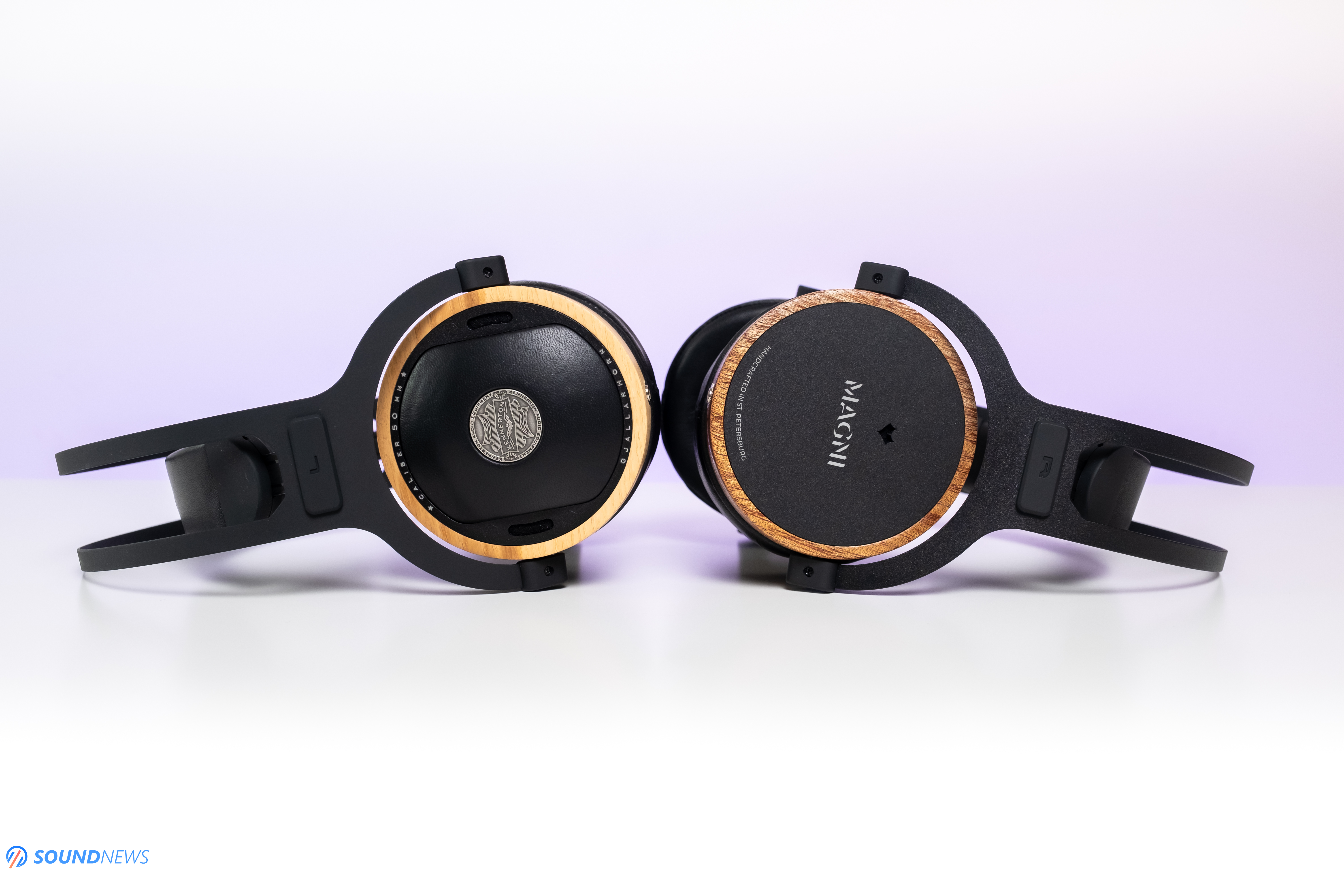
Conclusion
Gjallarhorn is a proof of concept, an unicorn of the headphone kingdom and a mad experiment that thankfully came to fruition. It reached its purpose and the biggest issue that plagued all closed-back headphones seems like a long-forgotten nightmare. The biggest surprise was that close-to-perfect tonal balance that I’m yet to find in another closed-headphone. It has as much bass as you’d want, detailed but inoffensive trebles and most importantly a natural rendition of midrange that always puts a smile on my face. Gjallarhorn costs more than the fun sounding Magni, but instead of a regular closed-in sound, you are getting an open wide and deep reaching sound that surpassed even some of my own open-back headphones. That is a treat that not a lot of headphone manufacturers can be proud about.
The tiny flaws I mentioned had to do mostly with their closed-back nature and not with the headphone design itself. There are still things that can’t be solved with a closed enclosure.
As for the price of owning an one-of-a-kind headphone, Kennerton Gjallarhorn will cost you €1080 for the Maple or for the Dusk version, you can get them by following this link and if you hunting for a cheaper B-stock pair, check this page once a day and with a bit of luck you can find them at a nice discount.
Gjallarhorn is by no means a cheap headphone, but considering its immaculate build quality from highest grade materials and its unique sound characteristics and their performance versus established manufacturers, I find their price extremely competitive and I’m happy to recommend them if you are looking for something else.

I am going to award them with our Silver Award for a different way of thinking and for taking the leap of faith in releasing such an interesting design philosophy to the masses. There are quite a lot of decent performing closed-back headphones, but unique in every way? None of them.
PROS:
- World-first horn-loaded headphones
- Amazing build quality using only long-lasting materials
- Once you smell handcrafted headphones, you can never go back to boring plastic ones
- Different wooden cups are adding a lot of character to these
- Very comfortable in the long run due to an amazing weight distribution and adjustment mechanism
- Good tonal balance, going towards a fun musical experience
- Full-bodied sound, there is warmth and naturalness in this one
- The most open and wide sounding closed-back headphone
- The deepest depth I’ve experienced in a closed-back headphone too
- Accurate pin-point imaging and note placement around the listener
- Great detail retrieval, challenging even pricier headphones
- Impactful dynamics with modern music
- Amazing speed and pretty good slam too
- The easiest to drive desktop headphones I came across
- The carry case and those high-quality detachable cables are adding a lot of value to this package
CONS:
- Treble could be slightly more linear
ASSOCIATED EQUIPMENT:
- DACs: Audiobyte HydraVox + HydraZap, Matrix Audio Element X, Flux Lab Acoustics FCN-10, Burson Conductor 3X Performance
- Headphone Amps: Benchmark HPA4, SparkoS Labs Aries, Flux Lab Acoustics FCN-10
- Integrated Amps: KECES E40
- Power Amps: KECES S125, Kinki Studio EX-M7
- IEMs: Meze Rai Penta, Rai Solo, FiiO FA9, FH7
- Portable headphones: Sennheiser Momentum 2, Meze 99 Classics
- Full-sized headphones: Kennerton Gjallarhorn, Kennerton Magni, Kennerton Wodan, Audeze LCD-4, Erzetich Phobos, Erzetich Mania, Hifiman Arya, Quad ERA-1, OLLO S4X Reference, Fostex TH-909
- Loudspeakers: Buchardt S400
- Interconnects: QED Reference (x2), Aune AL3
- Speaker cables: Kimber PR8, Audioquest Type4
- Power Cables: Isotek EVO3 Premier (x3)
- Balanced Isolation Power Conditioners: PLiXiR Elite BAC400, KECES BP-600
